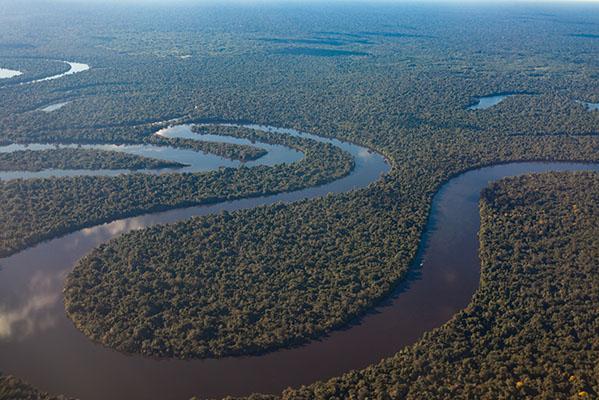Global mercury levels in rivers have doubled since Industrial Revolution
Mercury levels in the world's rivers have more than doubled since the pre-industrial era, according to new research from Tulane University that establishes the first known global baseline for riverine mercury pollution.
The study, published in Science Advances, developed a process-based model to simulate mercury transport in rivers and found that global rivers carried approximately 390 metric tons of mercury to oceans annually before 1850. Today, that figure has jumped to about 1,000 metric tons per year.
Primary drivers of the increase are wastewater discharge, soil erosion and mercury releases from industrial activities and mining, said lead author Yanxu Zhang, associate professor of Earth and environmental sciences at Tulane School of Science and Engineering.
“Human activities have disrupted the global mercury cycle in every aspect,” Zhang said. “While previous studies have focused on mercury concentrations in the atmosphere, soils and seawater, they have largely overlooked rivers, a major pathway for mercury that has effectively become a pipeline for wastewater from both municipal and industrial sources.”
The findings have significant implications for human health and wildlife, as mercury compounds are potent neurotoxins that can accumulate in fish and pose health risks through consumption. The researchers noted that rivers near critical wildlife habitats, including major bird migration flyways in East Asia and North America, have experienced concerning increases in mercury levels.
"The establishment of a baseline for riverine mercury during the pre-industrial era can serve as a key reference point," said Zhang, noting that it could provide targets for international agreements like the Minamata Convention on Mercury, which aims to reduce global mercury pollution.
The Tulane research team includes postdoctoral associate Tengfei Yuan, collaborating with scientists Dong Peng from Nanjing University and Zeli Tan from the Pacific Northwest National Laboratory.
They created a detailed computer model called MOSART-Hg to simulate pre-industrial mercury transport from land to oceans through river systems. Their findings closely matched mercury concentrations found in dated sediment core samples from coastal areas around the world, validating their approach.
Regional patterns revealed the most dramatic increases in mercury pollution occurred in North and South America, which contribute 41% of the global growth in riverine mercury since 1850, followed by Southeast Asia (22%) and South Asia (19%).
The study identified artisanal and small-scale gold mining (ASGM) as a particularly significant contributor to mercury pollution in South America, Southeast Asia and parts of Africa. In the Amazon region, for instance, mercury levels have soared due to both increased soil erosion from deforestation and mercury releases from mining activities.
"The Amazon River's mercury budget now exceeds 200 metric tons per year, with three-quarters of this originating from human activities and primarily ASGM," Zhang said.
Industrial mercury releases were identified as the main driver of increases in regions like East Asia, where rivers in China contribute more than 70% of the regional mercury. The Yangtze River's mercury flux has more than doubled from pre-industrial levels.
Not all regions saw increases, however. The Mediterranean region experienced lower mercury levels compared to pre-industrial times, which researchers attribute to the construction of dams like the Aswan High Dam on the Nile River that trap mercury-laden sediment.
Riverine mercury concentrations could serve as a rapid-response metric to assess the effectiveness of mercury pollution governance as countries work to reduce mercury emissions and restore polluted environments, he said.
The study also involves international collaborators from the University of California San Diego, Beijing Forestry University, the U.S. Geological Survey and Géosciences Environnement Toulouse.


